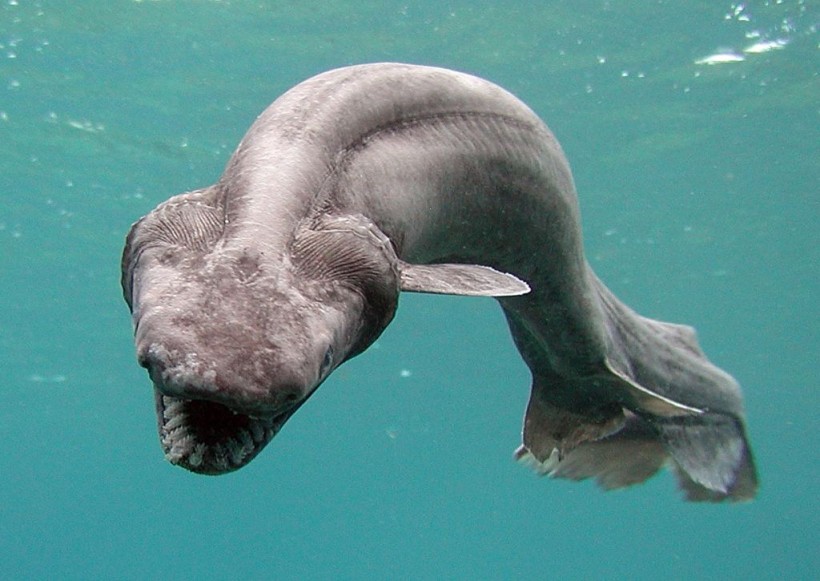Trawlers have unexpectedly caught an astonishing and terrifying deep-sea creature rarely seen. According to Daily Star, it was a five-foot frilled shark that was caught 2,000 feet below the water's surface off the coast near Portugal.
The fish is a distant cousin of hammerhead and great white sharks but equally terrifying. Frilled sharks have approximately 300 teeth and are known to be living fossils because they have changed so little over the last 80 million years.

In this handout picture released by Awashima Marine Park, a 1.6 meter long Frill shark swims in a tank after being found by a fisherman at a bay in Numazu, on January 21, 2007 in Numazu, Japan.
Rarely Seen Frilled Shark With Intense 300 Teeth Captured
Frilled sharks are found all over the world but rarely seen because they live in depths between 390 and 4,200 feet. Thus, people do not see them unless they venture to the surface.
In January 2007, one was captured by a Japanese fisherman, who alerted the staff of the Awashima Marine Park in Shizuoka about the rare find. They believed it came close to the surface because it was sick or weak because these sea creatures live under water deeper than humans can go, Mental Floss reported. The shark died a few hours after it was captured.
One of the most outstanding features of frilled sharks is their intense teeth. They have 25 rows of backward-facing, trident-shaped teeth 300 in all.
Their peculiar shape teeth are very sharp and constructed to grasp their prey. They also have spines called dermal denticles lining their mouth. With their huge mouth and hundreds of teeth, they could easily capture their prey, such as squid and other fish.
The researchers caught this bizarre fish in 2017 while fishing in the ocean near Portugal. They told Portuguese news outlet SIC Noticisas TV that they were conducting a European Union project to minimize the bycatch, or unwanted catch, during commercial fishing when they hauled up one of the rarest catches.
Researchers described the frilled shark as having a "long slim body and a head reminiscent of a snake." The fish was 5 feet long, while the photos shared online show its intimidating teeth and jaw large enough to catch their prey, suggesting that they could pose the biggest threat to other fish.
Professor Margarida Castro of the University of the Algarve told the news outlet that frilled sharks use their 300 teeth to trap squid, fish, and even other sharks in sudden lunges. Given that they live in the deep and are rarely seen, little is known about the living fossil except that they can be found in the Atlantic Ocean and on the coasts of Japan and Australia.
ALSO READ: Two Fishermen Pulled Up Half-Eaten Giant Shark Out the Ocean: What Could Have Eaten It?
All About Frilled Sharks
The frilled shark is a bizarre prehistoric shark that lives in the open ocean and spends most of its time in the deep. According to Oceana, these sea creatures can grow up to 7 feet (2 meters) in length. Their fins are placed in the far back of their body and they got their name from the frilly appearance of their gill slits.
Frilled sharks are active predators that can lunge anytime and swallow their prey whole, much like how snakes eat. But they are rarely seen in the wild, so scientists have limited information about them except for some dissected specimens captured in deep-sea nets.
In terms of reproduction, frilled sharks reproduce internally and give live birth. However, these fish do not connect to their young through a placenta. Embryos live off of the energy from yolk sacs and only survive on their own when their mother gives birth to their young.
Since they are rarely seen, their population trends are also unknown. Although they are sometimes accidentally caught as bycatch in fisheries in which they are kept and used as a food despite no fisheries explicitly targeting them.
Experts said that with the natural rarity of frilled sharks and occasional captures, they could be considered near-threatened species.
RELATED ARTICLE: "Living Fossil" Frilled Shark Comes Up From Ocean Depths
Check out more news and information on Sharks in Science Times.














